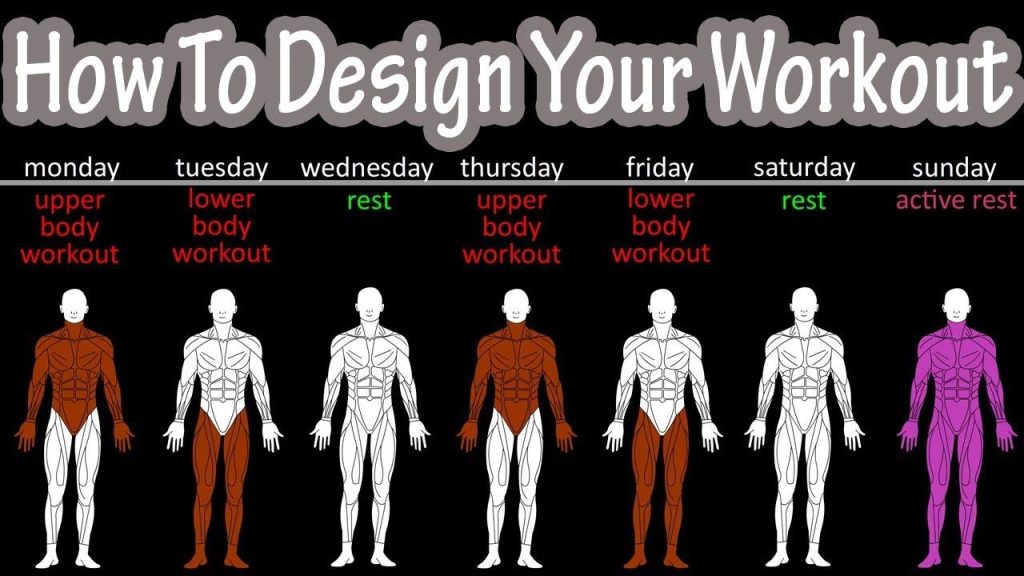Embarking on the journey to regain fitness after a prolonged inactivity can be daunting. It’s a path fraught with potential missteps and challenges but also an opportunity to recommit to personal health and wellness. Adopting a systematic and patient approach is the key to a successful transition back to fitness. Recognizing that the body’s needs and capabilities might have changed is crucial. This article outlines vital steps to help individuals ease back into getting into shape, focusing on assessing one’s current fitness level, designing a balanced workout plan, the critical role of nutrition, and the need to listen to the body’s signals. Following these guidelines can make the journey back to fitness effective and enjoyable, leading to sustainable health benefits.
Contents
- 1 Assess Your Current Fitness Level
- 2 Design a Balanced Workout Plan
- 3 Prioritize Consistency Over Intensity
- 4 Incorporate Proper Nutrition
- 5 Listen to Your Body
- 6 Stay Motivated and Track Progress
- 7 Embrace Flexibility in Your Routine
- 8 Understand and Manage Stress
- 9 Educate Yourself on Fitness and Health
- 10 The Bottom Line
Assess Your Current Fitness Level
Understanding your starting point is critical when resuming fitness activities after a break. It’s common to overestimate one’s abilities, leading to potential injury or demotivation. Begin by evaluating current physical strengths and limitations. This assessment can be as simple as noting how long you can walk or run without getting overly tired or how many basic exercises like push-ups or squats you can do. This self-assessment sets the stage for realistic goal setting, ensuring the targets are challenging yet achievable and minimizing the risk of discouragement or injury.
Setting realistic goals is the cornerstone of a successful fitness journey. These goals should be specific, measurable, achievable, relevant, and time-bound (SMART). For instance, aiming to jog for 15 minutes without a break within a month is a specific and measurable goal. It’s crucial to remember that these goals can always be adjusted as you progress, ensuring they remain aligned with your evolving fitness level.
Design a Balanced Workout Plan
Creating a balanced workout plan is essential for achieving overall fitness. A well-rounded routine should include cardiovascular exercises, strength training, and flexibility workouts. Start with light exercises and gradually increase the intensity. For example, if you’re new to strength training, begin with bodyweight exercises before moving on to weights. Similarly, incorporate low-impact cardio exercises like walking or cycling before transitioning to more intense activities like running or high-intensity interval training (HIIT).
Variety in your workout routine is not only beneficial for all-around fitness but also keeps the routine interesting and engaging. Incorporate different forms of exercises to work on various muscle groups and to keep the workouts enjoyable. Remember, the key is gradual progression; increasing the intensity too quickly can lead to burnout or injury. Listen to your body and increase the intensity only when you feel comfortable and confident in your current routine.
Prioritize Consistency Over Intensity
Consistency is more important than intensity when getting back into shape. The regularity of your workouts will yield long-term results, not the intensity of a few sessions. Establishing a routine that fits into your daily schedule is crucial. Choose a time of day when you’re most energetic and likely to stick to your workout. Making exercise a non-negotiable part of your daily routine is vital for consistency.
Avoid the pitfall of pushing too hard, too fast. Many people make the mistake of intense workouts in the initial days, only to burn out or get injured. It’s better to start with moderate exercises and gradually build the intensity. Remember, even a 20-minute walk is better than an hour-long session that leaves you exhausted or demotivated. The goal is to make fitness a sustainable part of your lifestyle.
Incorporate Proper Nutrition
A balanced diet plays a pivotal role in getting back into shape. Proper nutrition provides the energy and nutrients needed to support your fitness journey. Start by incorporating nutrient-rich foods into your diet, including vegetables, fruits, lean proteins, whole grains, and healthy fats. Pay attention to portion sizes and eat regularly to maintain energy levels throughout the day.
Hydration is another critical aspect of nutrition. Water plays a vital role in bodily functions, including muscle recovery and performance during exercise. Ensure you drink adequate water throughout the day, especially before, during, and after workouts. Avoid heavily processed foods and sugary drinks, which can hinder your fitness progress. Instead, focus on whole, unprocessed foods that provide sustained energy and essential nutrients.
Listen to Your Body
Listening to your body is paramount in preventing injuries and ensuring steady progress. The difference between a beneficial workout and one that causes harm often lies in understanding and respecting your body’s signals. If you experience pain, significant discomfort, or exhaustion, these could be signs that you need to slow down or alter your workout routine. It’s essential to distinguish between the normal discomfort associated with exertion and pain that signals an injury.
Rest and recovery are as important as the workouts themselves. Make sure to include rest days in your fitness plan to allow your muscles to recover and strengthen. Utilize stretching, yoga, or even light walking on rest days to promote recovery. Adequate sleep is also crucial, aiding muscle repair and overall well-being. Remember, making fitness gains is a gradual process, and giving your body time to adapt and heal is a critical part of that journey.
Stay Motivated and Track Progress
Staying motivated can be challenging, especially after the initial excitement wears off. Setting small, achievable goals can help maintain motivation. Celebrate these small victories, whether it’s being able to run an extra mile or completing a workout routine. Tracking progress through a fitness app or a simple journal can be highly motivating. Seeing tangible evidence of improvement is a powerful motivator to keep pushing forward.
Find a workout buddy or join a fitness community. This can provide a sense of accountability and support, making the fitness journey more enjoyable. Sharing experiences, challenges, and successes with others can be incredibly motivating. It’s also important to remind yourself why you started and the benefits you’re working towards. Whether it’s improving health, gaining strength, or boosting mental well-being, keeping these goals in mind can help sustain motivation.
Embrace Flexibility in Your Routine
Flexibility in your fitness routine is key to maintaining it long-term. Life can be unpredictable, and your workout schedule might need to adjust accordingly. Be prepared to modify your routine as needed, whether due to changes in your personal life, work demands, or just a need for variety. This flexibility helps in maintaining a consistent workout habit even when circumstances change.
Incorporating different workouts can prevent boredom and keep the routine fresh and exciting. Experiment with new activities, like swimming, dancing, or a new fitness class. This adds variety, challenges different muscle groups, and improves overall fitness. Remember, being adaptable with your fitness routine is not a sign of weakness but a strategy for long-term success.
Understand and Manage Stress
Stress can have a significant impact on your fitness journey. Understanding how stress affects your body and your workout routine is important. High-stress levels can lead to fatigue, making maintaining a consistent workout schedule difficult. It can also lead to unhealthy eating habits, which can counteract your fitness efforts.
Find ways to manage stress effectively. Techniques such as meditation, deep breathing exercises, or engaging in hobbies can help reduce stress levels. Additionally, exercise itself is a great stress reliever. Regular physical activity can improve mood, reduce anxiety, and create a sense of well-being. Balancing your fitness routine with effective stress management techniques can improve overall health and fitness outcomes.
Educate Yourself on Fitness and Health
Educating yourself about fitness and health can empower you to make better workouts and diet decisions. Understanding the basics of how your body works, the benefits of different types of exercises, and the principles of nutrition can enhance your fitness journey. This knowledge enables you to tailor your fitness plan more effectively to your body’s needs.
Many resources are available for learning, including books, online courses, and fitness blogs. However, be discerning in the information you consume, and consider consulting with fitness professionals for personalized advice. Continuous learning keeps you informed, motivated and engaged in your fitness journey.
The Bottom Line
Getting back into shape after a long break is a journey that requires patience, commitment, and a well-thought-out approach. By assessing your current fitness level, designing a balanced workout plan, staying consistent, and listening to your body, you set the foundation for a successful return to fitness. Staying motivated, embracing flexibility, managing stress, educating yourself, and keeping the journey fun are equally crucial elements in this journey.











